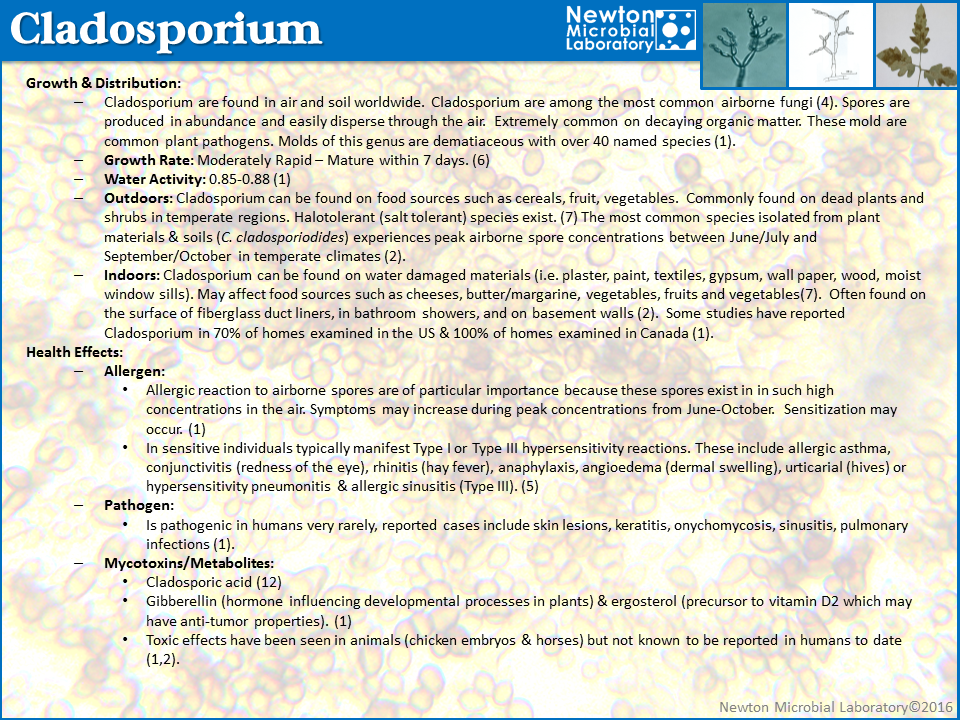Cladosporium
Growth & Distribution:
Cladosporium are found in air and soil worldwide. Cladosporium are among the most common airborne fungi (4). Spores are produced in abundance and easily disperse through the air. Extremely common on decaying organic matter. These mold are common plant pathogens. Molds of this genus are dematiaceous with over 40 named species (1).
Growth Rate: Moderately Rapid – Mature within 7 days. (6)
Water Activity: 0.85-0.88 (1)
Outdoors: Cladosporium can be found on food sources such as cereals, fruit, vegetables. Commonly found on dead plants and shrubs in temperate regions. Halotolerant (salt tolerant) species exist. (7) The most common species isolated from plant materials & soils (C. cladosporiodides) experiences peak airborne spore concentrations between June/July and September/October in temperate climates (2).
Indoors: Cladosporium can be found on water damaged materials (i.e. plaster, paint, textiles, gypsum, wall paper, wood, moist window sills). May affect food sources such as cheeses, butter/margarine, vegetables, fruits and vegetables(7). Often found on the surface of fiberglass duct liners, in bathroom showers, and on basement walls (2). Some studies have reported Cladosporium in 70% of homes examined in the US & 100% of homes examined in Canada (1).
Health Effects
Allergen:
Allergic reaction to airborne spores are of particular importance because these spores exist in in such high concentrations in the air. Symptoms may increase during peak concentrations from June-October. Sensitization may occur. (1)
In sensitive individuals typically manifest Type I or Type III hypersensitivity reactions. These include allergic asthma, conjunctivitis (redness of the eye), rhinitis (hay fever), anaphylaxis, angioedema (dermal swelling), urticarial (hives) or hypersensitivity pneumonitis & allergic sinusitis (Type III). (5)
Pathogen:
Is pathogenic in humans very rarely, reported cases include skin lesions, keratitis, onychomycosis, sinusitis, pulmonary infections (1).
Mycotoxins/Metabolites:
Cladosporic acid (12)
Gibberellin (hormone influencing developmental processes in plants) & ergosterol (precursor to vitamin D2 which may have anti-tumor properties). (1)
Toxic effects have been seen in animals (chicken embryos & horses) but not known to be reported in humans to date (1,2).

